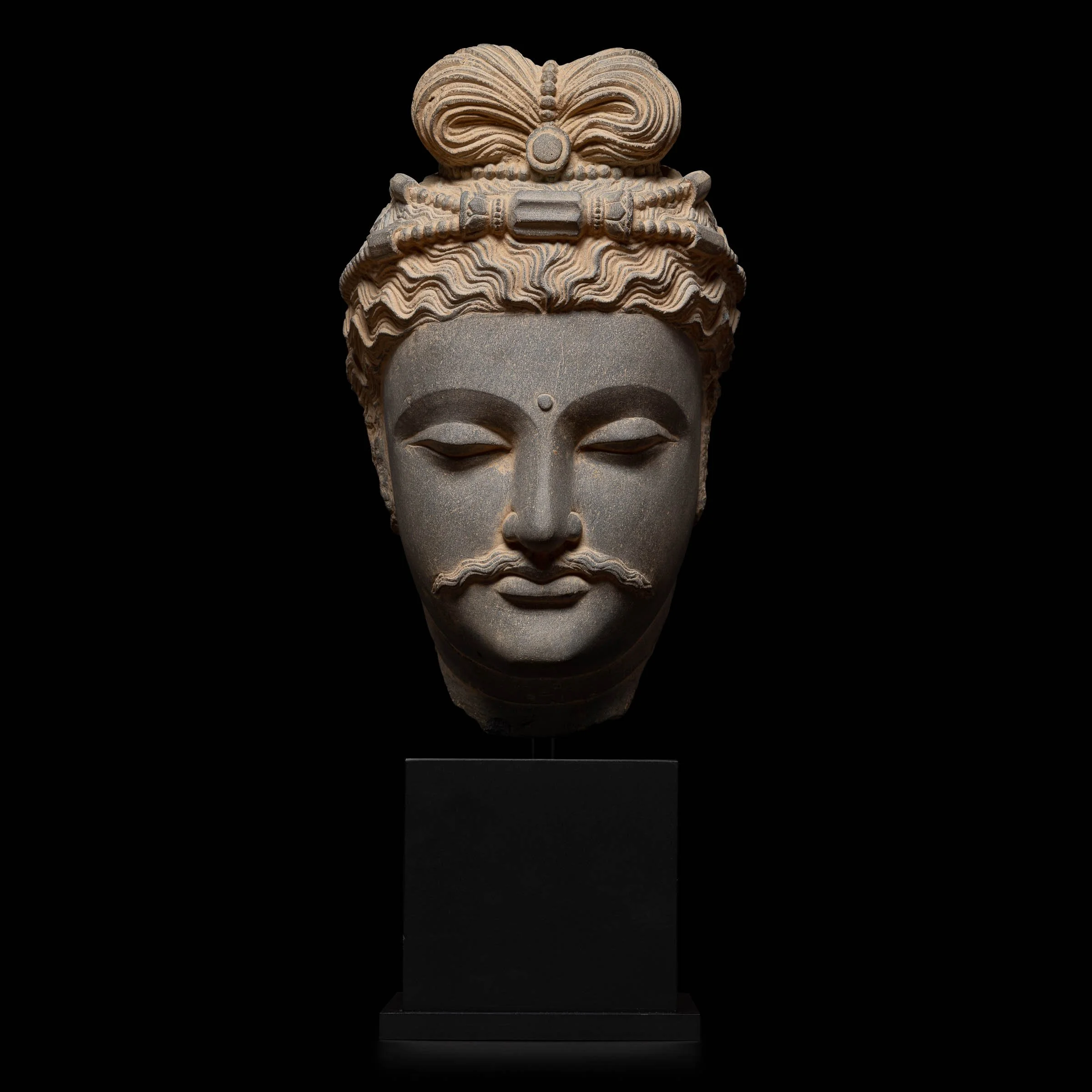a head of a bodhisattva
Exquisitely crafted, the sculpture features finely detailed elements including full lips, a drooping mustache, an aquiline nose, and heavy-lidded eyes centered by a hollowed urna. The wavy locks of hair are intricately tied up in a topknot, secured with a headband adorned with a triratna.
In the Gandharan context, the looped topknot seen in this hairstyle typically symbolizes the bodhisattva Maitreya. Notably, the ornamentation at the center of the headband displays a remarkable degree of variety among extant examples. The present piece stands out with its unique triratna shape, representing the three jewels of Buddhism—the Buddha, the dharma, and the monkhood.
What sets this sculpture apart is its uncommon preservation of original polychromy, a rarity for schist works. This hints at the vibrant colors these sculptures originally bore, offering a glimpse into their initial fully painted state. A remarkable bodhisattva sculpture from the Metropolitan Museum of Art collection (1987.218.11) echoes stylistic similarities, underscoring the enduring artistic legacy from a century later.
Gandhara, 2nd/3rd century
-
Gray schist
-
10 ¼ in (26 cm) high
-
Private Belgian collection, by inheritance, originally acquired by his father during a working stay in Pakistan in the 1960s.
-
Himalayan Art Resources, item number 1333





